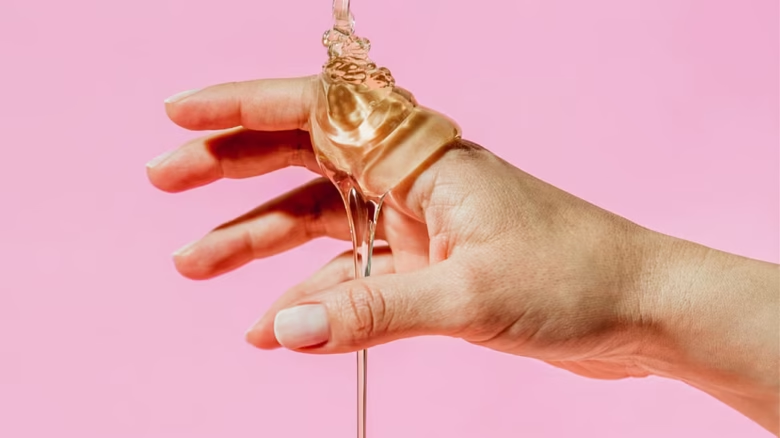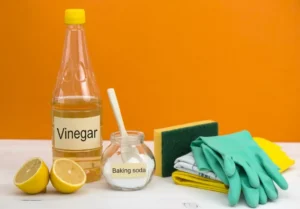Burns, whether caused by cooking accidents, sun exposure, or industrial injuries, are among the most common types of wounds we experience. While minor burns can often be treated at home, knowing the best remedies and treatments can make all the difference in healing and avoiding scarring. One of the most effective and natural remedies is honey, a powerful substance that has been used for centuries for its healing properties.
In this article, we will explore how honey can be used to treat minor burns, why it’s so effective, and how to use it properly. Whether you’re dealing with a burn from cooking or a mild sunburn, honey could be your next go-to natural remedy.
1. Understanding Minor Burns
Before diving into how honey works as a treatment, it’s important to understand the nature of minor burns. Burns are classified into three categories: first-degree, second-degree, and third-degree burns. However, for this article, we’ll focus on minor burns—those that fall into the first-degree and mild second-degree categories.
Types of Burns
- First-Degree Burns: These are the least severe burns, affecting only the outer layer of the skin (epidermis). Common signs include redness, pain, and minor swelling. Sunburns often fall into this category.
- Second-Degree Burns: These burns affect the epidermis and the dermis (the second layer of skin). In addition to redness and pain, blisters may form, and the skin can look wet or shiny.
- Third-Degree Burns: These are the most severe, affecting all layers of the skin, and often result in numbness due to nerve damage. These burns require immediate medical attention and are not treated with honey.
Symptoms of Minor Burns
- Pain: A burning or stinging sensation.
- Redness and swelling: A slight discoloration in the affected area.
- Blistering (second-degree): Fluid-filled blisters may form.
- Dry skin (for minor burns): The skin can feel dry but not severely damaged.
Minor burns, especially first-degree burns, usually heal in 3–5 days with proper care, while mild second-degree burns may take up to two weeks.
2. Why Honey Works for Treating Minor Burns
Honey is not only a sweet treat but also a potent healing agent. Its remarkable healing properties make it an excellent natural remedy for minor burns.
Antibacterial Properties
One of the most significant benefits of honey is its antibacterial effect. Honey contains natural compounds that prevent the growth of harmful bacteria, reducing the risk of infection in burn wounds. In fact, research has shown that honey can combat bacteria such as Staphylococcus aureus (commonly found in wounds) and Escherichia coli (which can lead to infection).
When applied to a burn, honey forms a protective barrier, preventing contaminants from entering the wound and facilitating the healing process.
Anti-inflammatory Properties
Honey is known for its anti-inflammatory properties, which help reduce pain, swelling, and redness associated with burns. When applied to the skin, it soothes the burn and promotes faster recovery by calming the inflammatory response.
Moisturizing Effect
Honey is a natural humectant, meaning it draws moisture into the skin and helps retain hydration. This keeps the burn wound moist, preventing it from drying out and cracking, which can delay healing. Moisture is crucial for proper burn healing as it prevents scabbing and encourages tissue regeneration.
Antioxidants
Honey is rich in antioxidants, such as flavonoids and phenolic acids, which help fight oxidative stress. These antioxidants neutralize free radicals, promote healthy cell growth, and speed up the healing process.
Promoting Faster Tissue Regeneration
Studies have shown that honey can accelerate the process of tissue regeneration, leading to faster healing times for minor burns. The enzymes in honey help stimulate skin repair by promoting cell turnover and encouraging the production of new tissue.
3. How to Use Honey for Minor Burns
If you have a minor burn, applying honey is a simple and effective treatment. Here’s a step-by-step guide:
Step-by-Step Guide for Applying Honey to Minor Burns
- Cool the Burn First:
If the burn is fresh, immediately rinse the affected area with cool water (but not ice-cold water). This helps reduce pain and prevents the burn from spreading. - Clean the Area:
Gently clean the burn with mild soap and water to remove dirt, debris, and any potential contaminants. Pat the area dry with a clean towel. - Apply Raw Honey:
- Choose raw honey, as it retains all its natural enzymes and healing properties. Avoid processed honey, as it may not have the same effectiveness.
- Apply a thick layer of honey directly onto the burn. You can use a clean cotton ball, gauze, or simply your fingertips to do this.
- Ensure the honey covers the entire burned area, including any blistered sections.
- Cover the Burn (Optional):
If the burn is in a location that may get rubbed or irritated (like your hands), you can cover it with a sterile gauze pad to keep the honey in place. - Leave It On:
Let the honey sit on the burn for at least 20–30 minutes. You can leave it on for longer, depending on the severity of the burn and your comfort level. - Rinse and Repeat:
After the honey has been applied for a sufficient amount of time, rinse it off with cool water. Reapply honey as needed, up to two to three times per day until the burn heals.
When to Seek Medical Attention
While honey is highly effective for minor burns, second-degree burns that cover large areas of skin or have deep blisters may require professional medical treatment. If you experience signs of infection, such as pus, increased redness, or fever, it’s essential to consult a healthcare professional.
4. Different Types of Honey for Treating Burns
Not all honey is the same, and different varieties have different levels of medicinal properties. Here’s a breakdown:
Raw Honey vs. Processed Honey
- Raw honey is unpasteurized and retains most of its healing properties, including enzymes, antioxidants, and antibacterial agents. It is the best option for burn treatment.
- Processed honey, which is pasteurized and filtered, may lose some of its beneficial compounds due to the heating process. It is less effective than raw honey.
Manuka Honey
Manuka honey, produced by bees pollinating the Manuka bush in New Zealand, is one of the most potent types of honey. It has a high level of methylglyoxal (MGO), a compound responsible for its antibacterial and anti-inflammatory effects.
Manuka honey is particularly beneficial for treating wounds, burns, and skin infections. When choosing Manuka honey, look for a UMF (Unique Manuka Factor) rating of 10+ or higher.
5. Honey and Burn Care: Complementary Treatments
While honey is effective on its own, you can enhance the healing process by complementing it with other natural treatments:
- **A
loe Vera**: Applying aloe vera gel in conjunction with honey can help cool the burn, reduce inflammation, and promote faster healing.
- Cold Compresses: Before applying honey, use a cold compress to reduce initial pain and swelling.
- Avoid Scratching or Popping Blisters: Let blisters heal naturally to prevent further damage and possible scarring.
6. Conclusion
Honey is an incredible natural remedy for treating minor burns. Its antibacterial, anti-inflammatory, and moisturizing properties make it an excellent choice for speeding up healing and preventing infections. Whether you use raw honey or opt for the more potent Manuka honey, incorporating honey into your burn care routine can significantly improve your recovery time and help you avoid scarring.
By following the steps above and using honey properly, you can heal minor burns effectively and naturally, avoiding harsh chemicals and promoting long-term skin health.




